Our friend—and wildlife rehabber—Kari Waddle has been at it again. The last time we checked in with Kari, she had invited us along for the release of a rowdy bunch of orphaned Gray Fox kits that she had rescued and rehabbed. That was a few years ago. This time around things were a little different. This time it was gaggle of baby Bobcats that needed Kari help and unique expertise.
ARTICLE – Gray Foxes Get Some Help
A total of four irrepressible Bobcat kittens had come into Kari’s care as the result of two different incidents. The first kitten was only a couple of weeks old when Kari took her in. The little Bobcat’s den was disturbed when a homeowner demolished their old backyard deck in order to install a new one. There were four kitten total in this litter, and the intrepid mother Bobcat relocated all of her kittens to a new den site, except one. For whatever reason this little girl was left behind and orphaned; she was going to need the help of a wildlife rehabber.
When Kari took possession of the tiny Bobcat kitten its little ears were just beginning to stand, but its eyes were still closed and it had no teeth. It would need a lot of special care and attention in order to thrive.
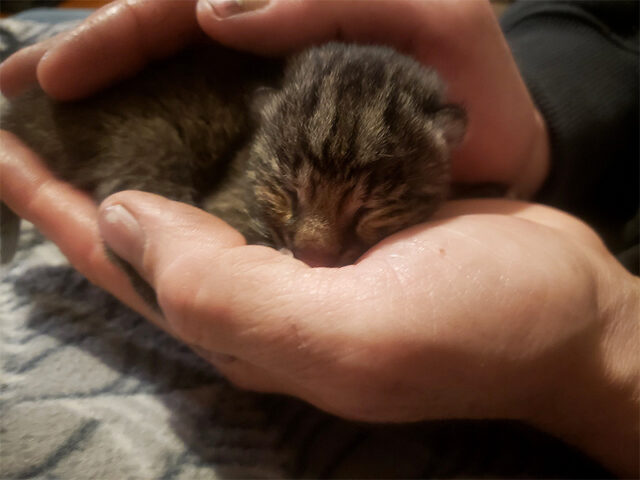
Photo by Kari Waddle
Any concerns about the little kitten’s prospects were soon put to rest however, as the feisty little wildcat proved to be a voracious eater with a seemingly bottomless pit for a stomach. The little bob responded well to his care and grew stronger by the day.
I asked Kari what name she had picked for the tiny little kitten, and she told me that they were trying to decide between Bruiser and Bacon—a difficult choice as both names suited the feisty little kitten quite well. I suggested Bacon-Bruiser as the best of both worlds, but Kari wisely settled on Bruiser instead.
It is commonly believed that Bobcat kittens in the care of a wildlife rehabber will have a better outcome if they are raised with littermates—either their own siblings or surrogates from another litter. The idea is that the littermates will help each other to remember that they are Bobcats—allowing them all retain their wild nature. Further, the company and engagement provided by the other kittens helps to buffer them all from becoming too attached to their human caregiver, which also helps them to stay untamed. The wilder a baby Bobcat remains, the better chance it will have for success when it is released at the end of its stint in rehab.
So, Kari put out the word on her social media channels; asking colleagues to keep an eye out for any newly orphaned Bobcat kittens that could use an always hungry and ever feisty littermate. Little did Kari suspect at the time, but it would be several months before the call would be answered. In the meanwhile, little Bruiser opened her eyes, grew in her milk teeth, weaned onto solid foods, and moved into a brand new outdoor enclosure built especially for her.
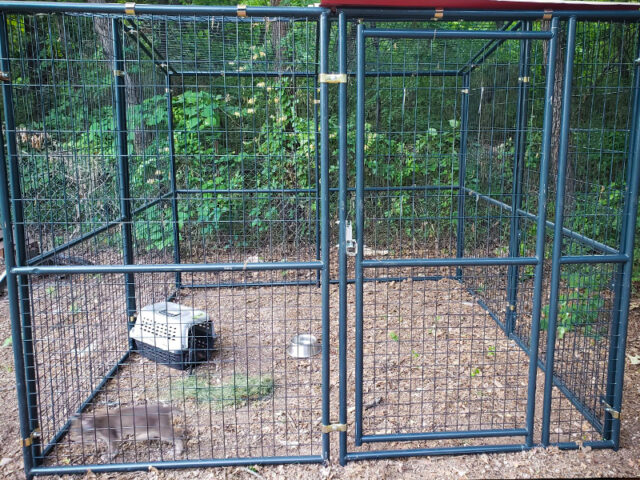
Photo by Kari Waddle

Photo by Kari Waddle
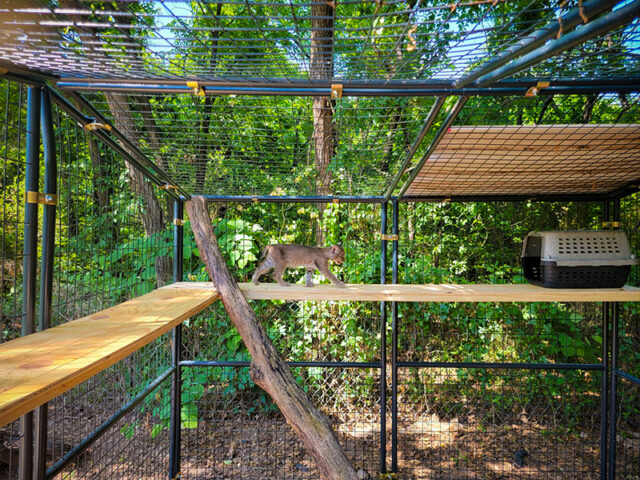
Photo by Kari Waddle

Photo by Kari Waddle
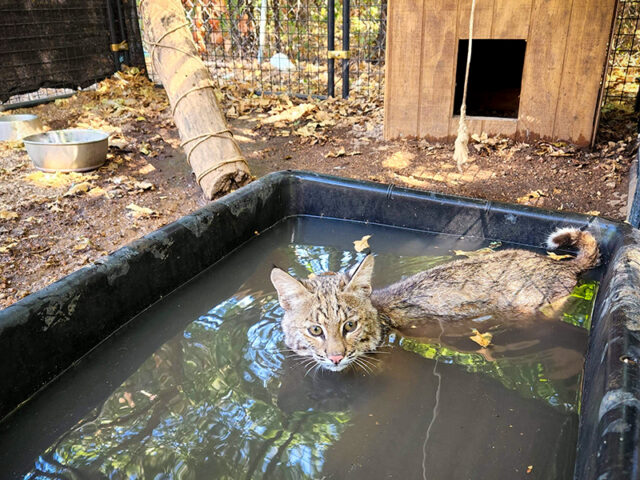
Photo by Kari Waddle
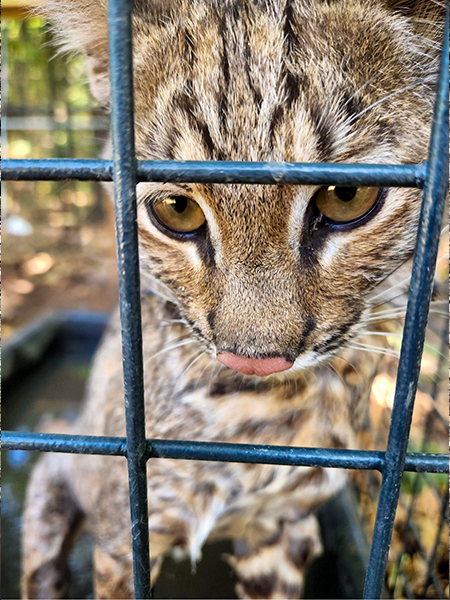
Photo by Kari Waddle
But even as Bruiser continued to thrive and progress, there arose concerns that she was becoming too attached to her human caregiver. It was becoming critical that a littermate for Bruiser be found just as soon as possible. And, it was around this time when Kari was finally contacted with news of a newly captured mother Bobcat and her litter of three young kittens—all in need of rehab.
The mother Bobcat was a special case. She was trapped due in part to a section of plastic pipe that had become stuck on her neck. This poor mother Bobcat was wearing the pipe section like a bulky and uncomfortable collar. There was real concern that it was hampering her ability to survive and care for her babies.
This type of flexible pipe is in common use all across the metroplex. People attach them to their rain gutter downspouts in order to better control the disposition of rainwater. Over time the plastic these pipes are made from becomes stiff and brittle. A Bobcat on the hunt might chase a retreating rat into one of these pipes—which are just large enough for the cat to be able to insert its head. And if the Bobcat’s head becomes stuck, a section of the pipe will likely break off as the cat attempts to escape. The end result is an unwieldy piece of plastic wrapped around the hapless Bobcat’s neck. Once this has happened there is very little the cat can do to extricate itself, and as was the case for the captured mother Bobcat, the only option remaining is to adapt to life hampered by the bulky plastic collar. The threat to the life and livelihood of the cat is obvious.
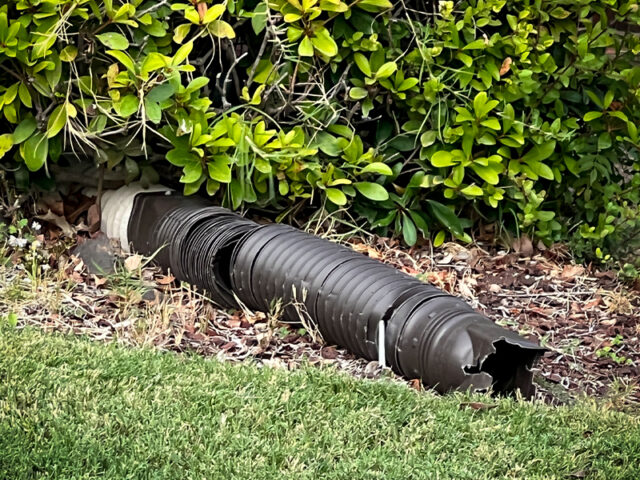
This unfortunate outcome is actually a relatively common occurrence in Dallas/Fort Worth neighborhoods. Over the years I have seen a number of pictures, from many different neighborhoods, illustrating Bobcats in the terrible predicament. It’s a hazard that urban Bobcats needn’t have to face; there are alternative available that do not require the use of these types of plastic pipes. But few people in the metroplex appreciate just how common Bobcats are in suburban and urban areas. It’s not surprising that people are generally unaware that these simple pipes pose a danger to local wildlife—how could they know? Hopefully, this article will serve to raise awareness and encourage at least some folks to look for other options for controlling downspout flow.
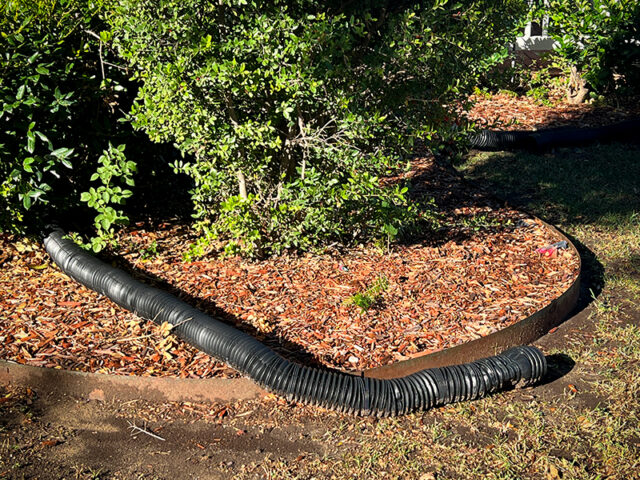
According to neighborhood reports, the Bobcat had been wearing the pipe around her neck for nearly a year. During that time the intrepid cat still manage to successfully provide for herself, AND a full litter of kittens—despite the challenges posed by the burdensome collar.
When the mother Bobcat was finally captured, it became possible to get a better look at her predicament. The resilient wild cat was estimated to be around 15 to 20 years of age. That’s a long life for an urban Bobcat, and a clear indication that this was one tough and smart old cat. In addition to the pipe around her neck, the mother cat also had a significant—but fully healed—injury to her upper lip. There was some speculation that it too was caused by the pipe, but there is no way to be 100% certain. After the initial exam was complete, it was determined that the best course of action would be to have a veterinarian remove the pipe while the Bobcat was under sedation, and arrangements to do so were quickly made.
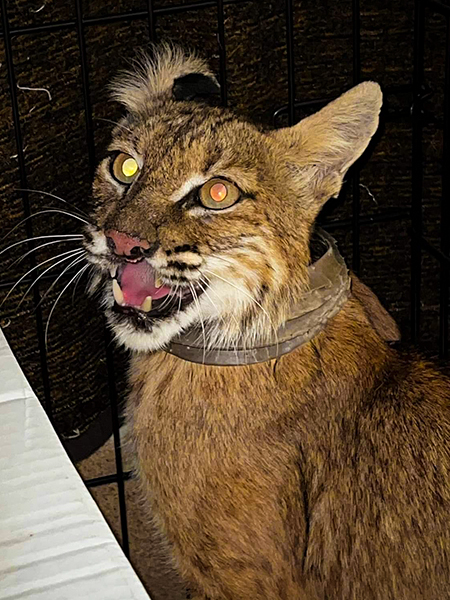
around her neck and the injury to her upper lip.
Photo by Kari Waddle
Meanwhile back at the den it did not take long to capture the now motherless Bobcat kittens. Without their mother to provide for them the adolescent Bobcat kittens quickly became hungry enough that luring them into a baited live trap was not difficult. And within a few days all three kittens were on their way to rehab as well.
The kittens would have to stay in rehab until they could grow a little stronger and develop the life skills they would need to survive on their own. But all was not lost… these three kittens were just the right age to be perfect litter mates for Bruiser. Putting the four of them together would work to the benefit of all!

Photo by Kari Waddle
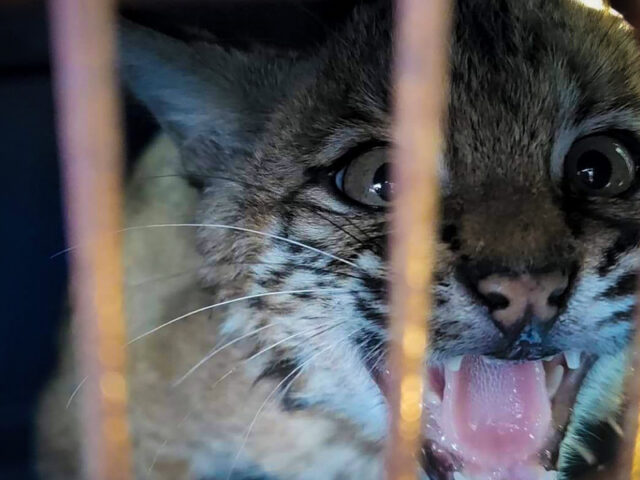
Photo by Kari Waddle

Photo by Kari Waddle
The three kitten were taken into Kari’s care, and they responded well to their new situation. And at the vet’s office, the procedure to remove the pipe from the mother Bobcat’s neck was successful and went over without a hitch. But soon there was a complication. The tough old cat was not adjusting well to captivity. She was becoming anxious and over-stressed. There were concerns that she might injure herself while attempting to escape from her enclosure. It soon became obvious that life in a cage was just not going to be an option for this independent-minded Bobcat, and the decision was made to release her back into the wild just as soon as possible.
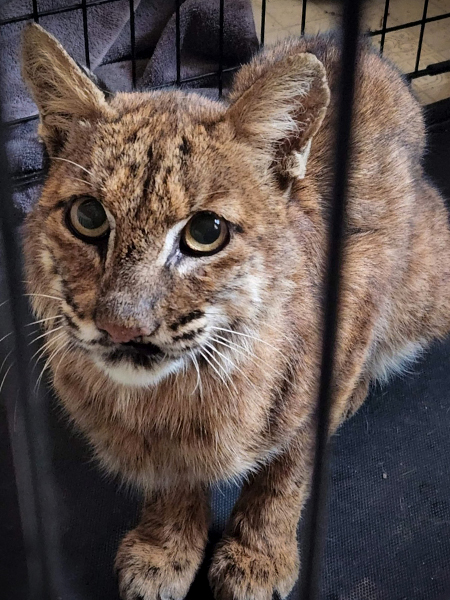
the burden of a section of pipe around her neck.
Photo by Kari Waddle
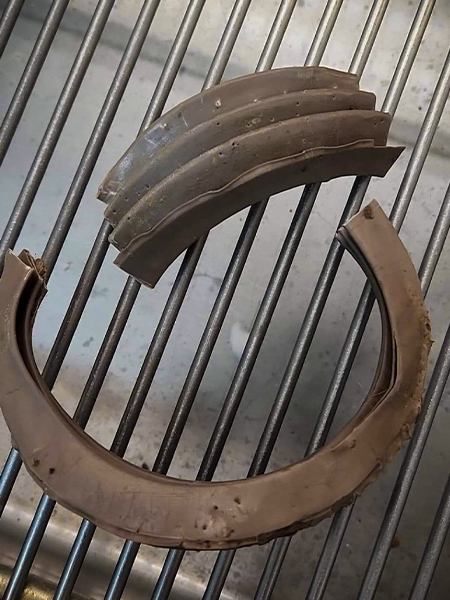
Photo by Kari Waddle
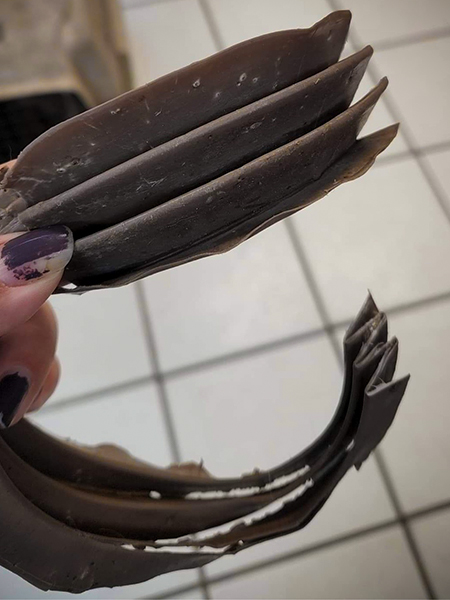
Photo by Kari Waddle
In the days that followed, the four Bobcat kittens were carefully introduced to each other without incident, and they quickly became fast friends. Bruiser gravitated naturally to her new littermates and she began to become more wild in her behavior, just as Kari had hoped. Soon it would be time to release all four nearly adult kittens back into the wild to begin their second chance at life free and uncaged.
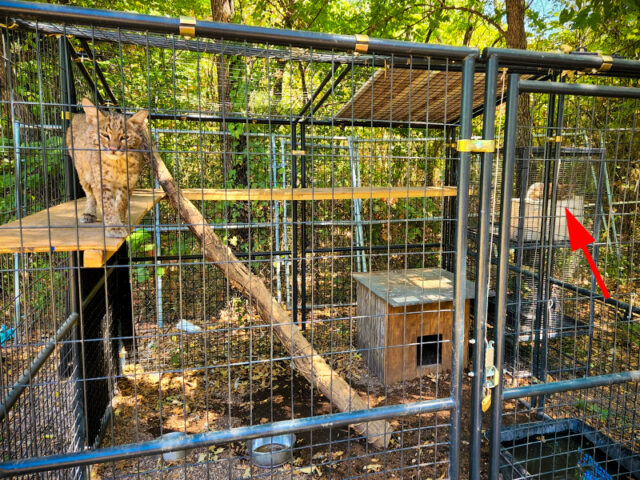
in a cage right next to Bruiser’s enclosure (red arrow).
Photo by Kari Waddle

Photo by Kari Waddle
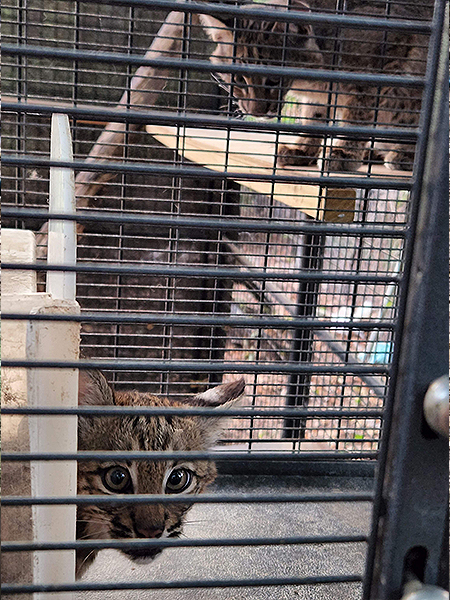
Photo by Kari Waddle
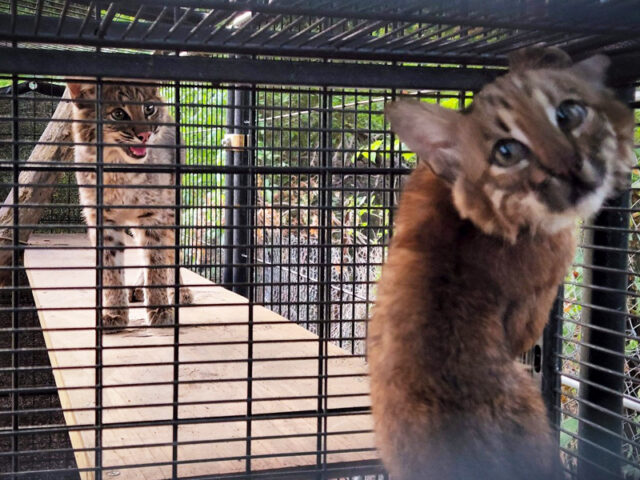
Photo by Kari Waddle

Photo by Kari Waddle

Photo by Kari Waddle
The time to release young Bobcats at last arrived in mid-October, as we joined a small convoy making the trek to Wise County on a beautiful fall day. The plan was to release all four of the young Bobcats on an expansive 300 acre habitat a few miles northeast of the town of Decatur. This was the same property were we successfully released the rehabbed Gray Fox kits all those years ago. It would suit these Bobcats just fine as well. The varied terrain and ample water features worked together to create a prime habitat, and would serve these juvenile cats as a wonderful new home range.


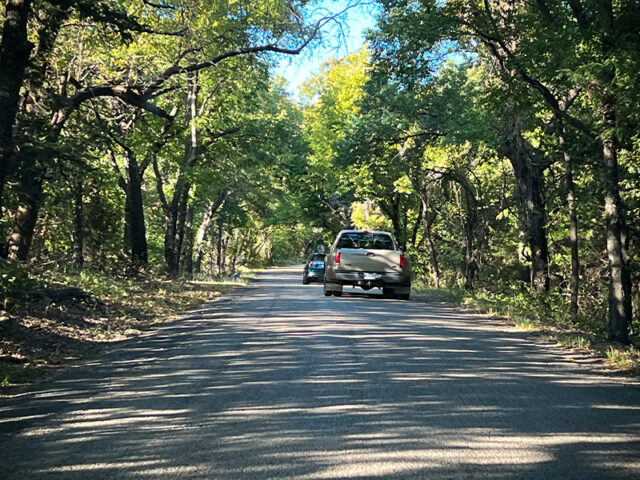

We arrived at the property in the afternoon, and after exchanging a few pleasantries with the very generous and accommodating property owner, we unloaded the Bobcats in their travel crates and lined them up near the tree line in preparation for their release. Four crates in a row. I positioned myself nearby in a spot conducive to recording pictures and waited for the doors to be opened!
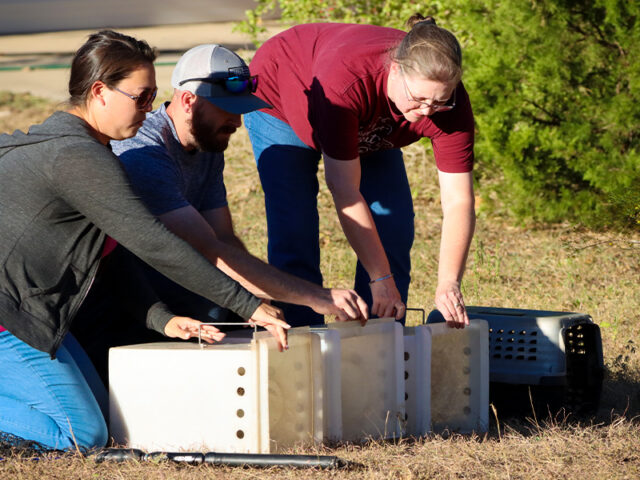
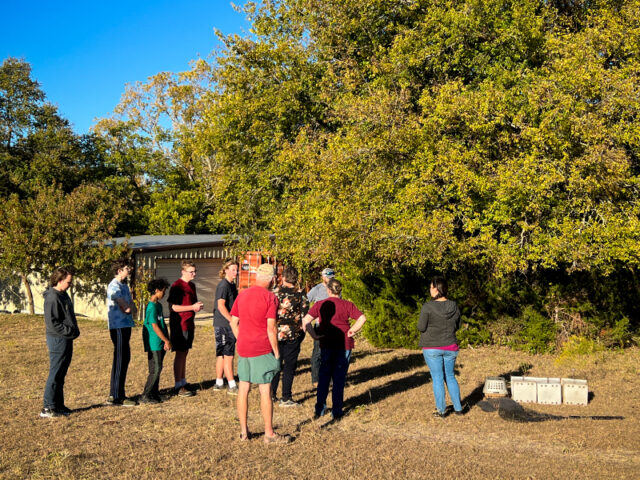
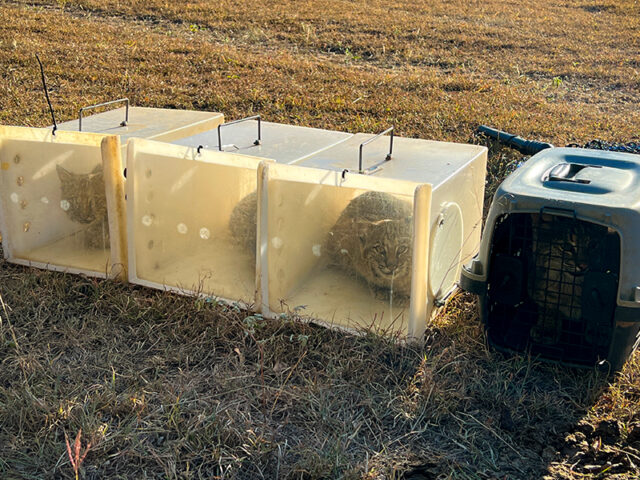
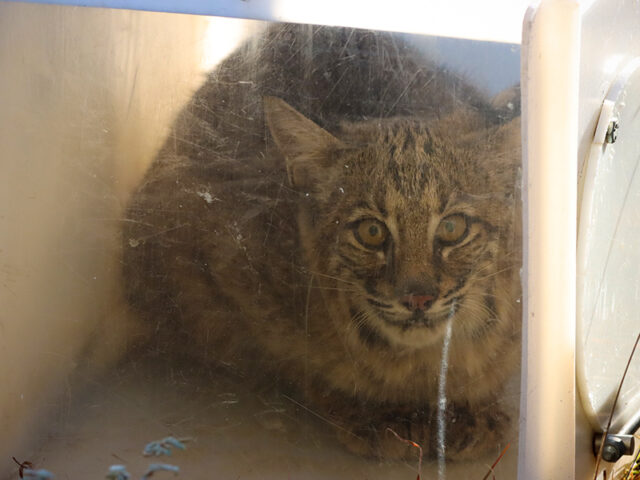
The first to be released would be the three Bobcat siblings. These cats were in rehab for a much shorter time than Bruiser, and they had remained wild in nature. Still largely unattached to their human caregiver, they were not expected to stay around long after they were freed. The doors of their crates were opened in unison, and the trio of young cats took off like a bolt—each in a different direction. All three quickly disappeared into the surrounding woods.
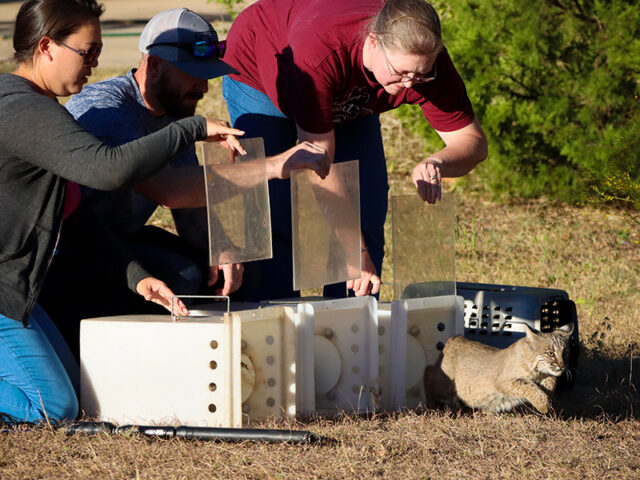
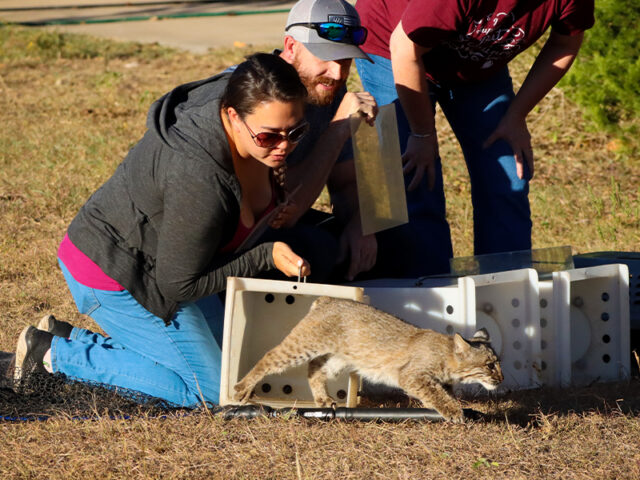
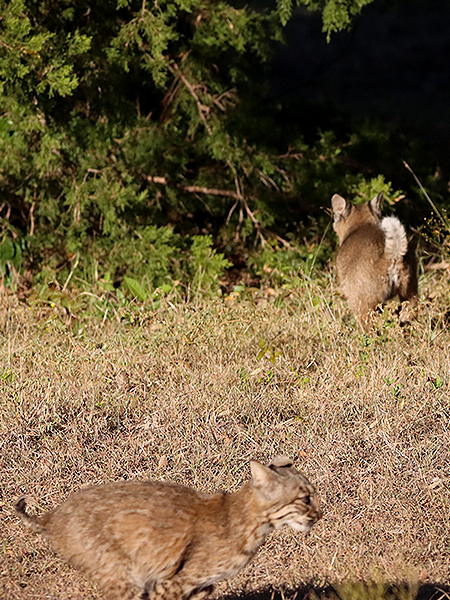
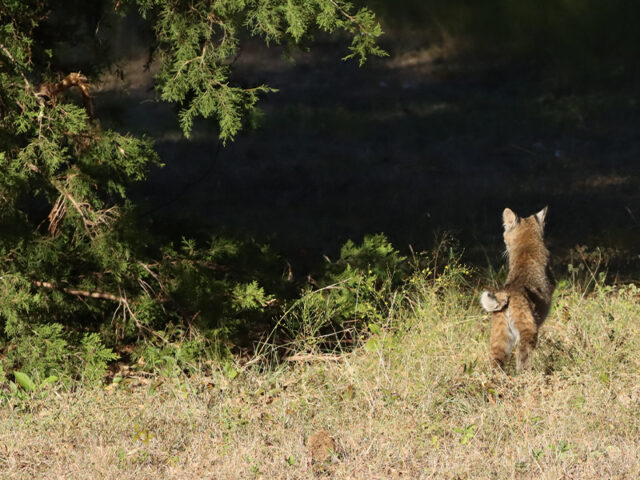
Now it was Bruiser’s turn to be set free. This release would be a little tougher for everyone. Bruiser had been in rehab for quite some time, and even though all efforts had been made to encourage her to remain as wild as possible, the little Bobcat had still developed a special relationship with Kari. And for her part, Kari had also formed a lasting attachment to the little kitten that she had taken care of for so long.
When Bruiser’s crate door was opened, she exited with much more caution than the other kittens. And instead of racing for the cover of the woods, Bruiser stayed close, carefully exploring her new habitat along the margin. The Bobcat was confident and unafraid; it was clear that she was going to make the adjustment without undue difficulty—she was just going to do it on her own timetable.
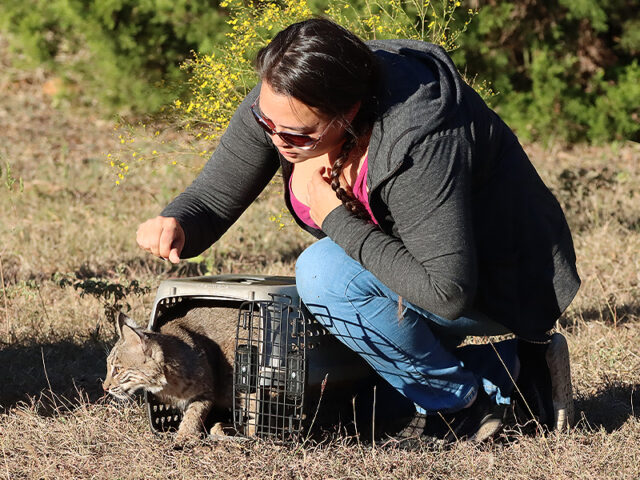


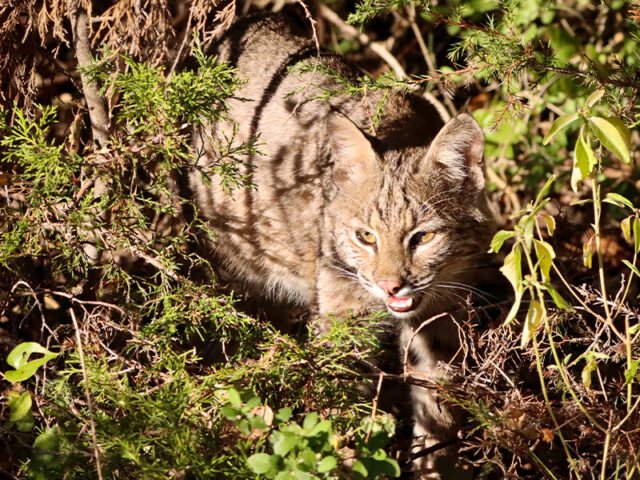
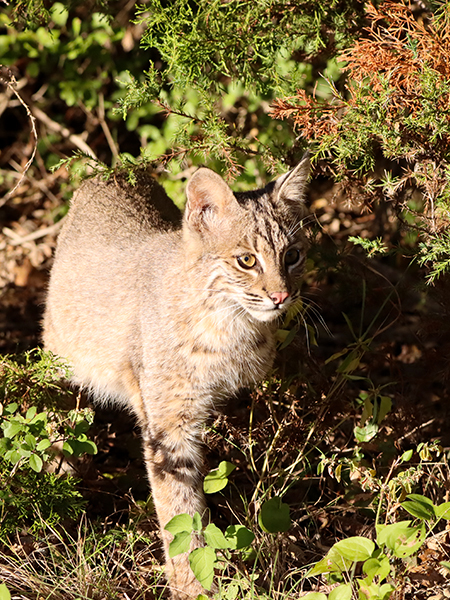
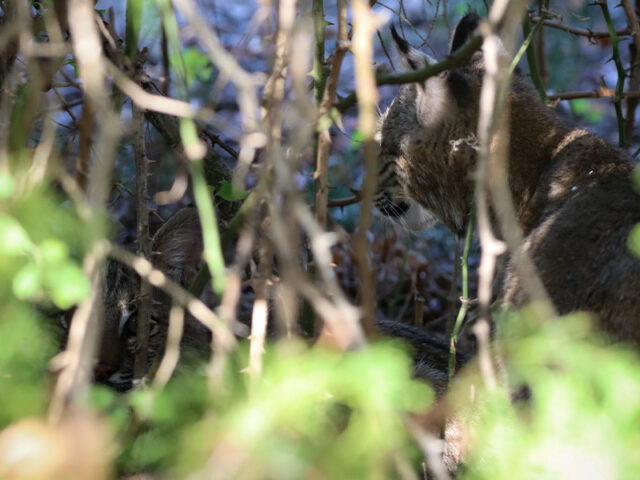
How many Bobcats can you find in this picture?
The group of us gathered around to chat and celebrate watching little Bruiser enjoying her newly found freedom. As the shadows began to stretch long with the setting of the sun, we knew it was almost time to begin the long drive back to the metroplex. Bruiser would soon have to navigate her first night alone in the wild.
It was around that time when we noticed a chunky Nine-banded Armadillo waddle over a nearby embankment and then down into the yard. The armored critter was busy foraging, and paid us very little mind as it went about its business. Now along the tree line, the Armadillo continued to work the margin until he found himself stationed under the same branches that concealed Bruiser. What followed next was fascinating to observe.
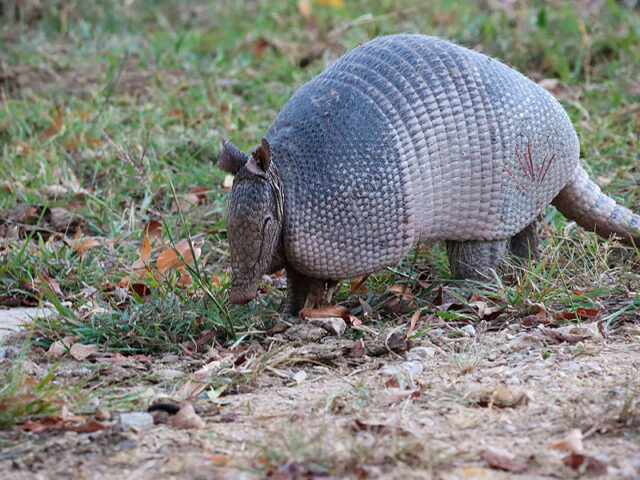

As you might imagine Bruiser quickly became very interested in the Armadillo, and he moved in closer for a better look. Soon the young Bobcat was following the foraging Armadillo as it made its rounds through the underbrush. Undeterred, the well armored Armadillo continued about its business without concern for the attention it was attracting.
But every once in a while Bruiser would move in just a little too close, and the Armadillo would lunge, aggressively chasing the Bobcat away until the distance between the two was more to its liking. This behavior pattern was repeated over and over again while we observed. It continued for something like 30-40 minutes, and was immensely entertaining. We watched the antics until the last of the daylight was gone.
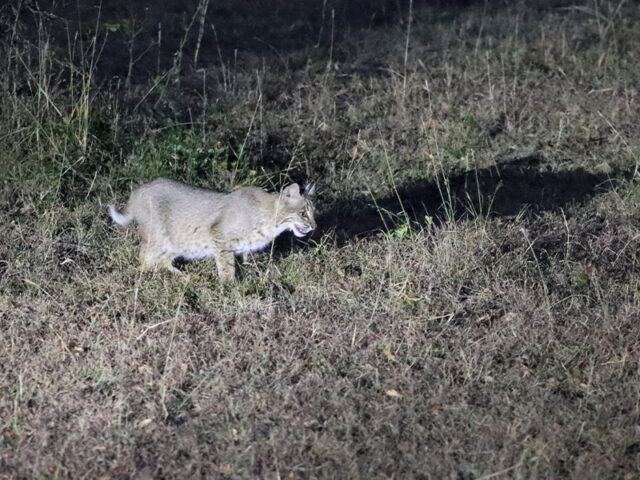
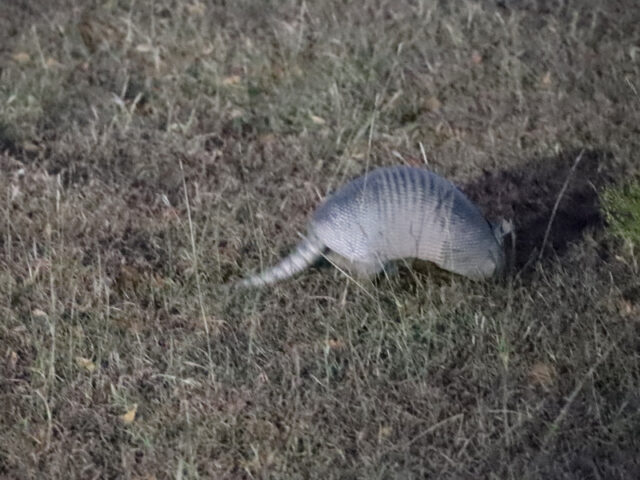
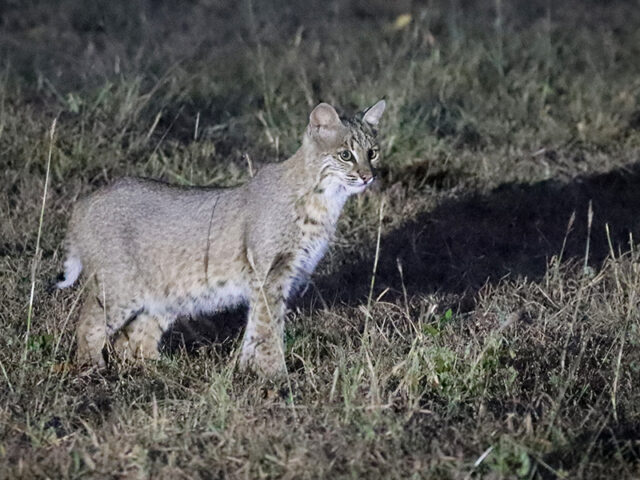
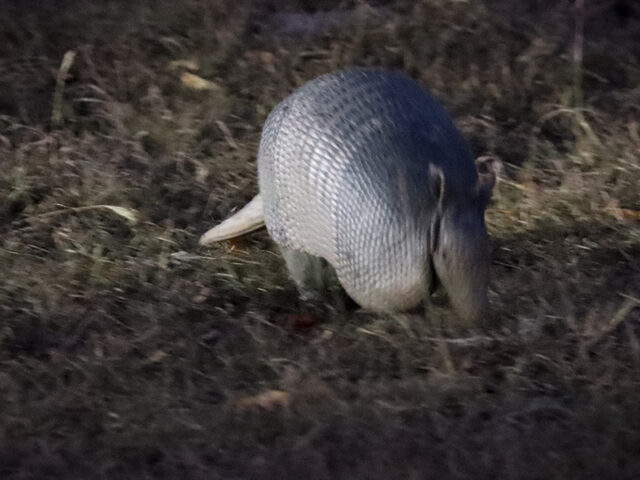
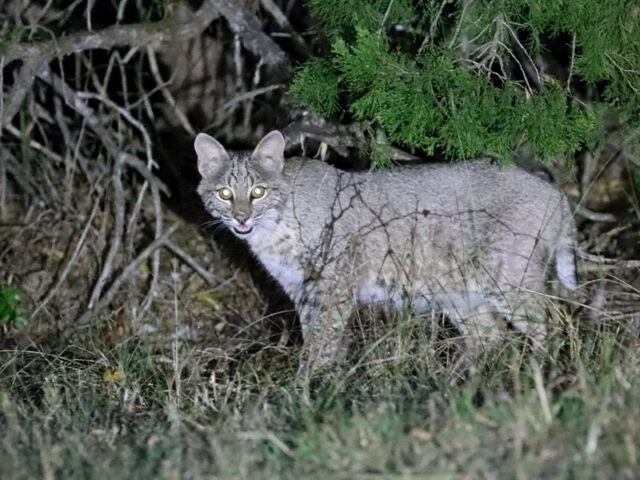
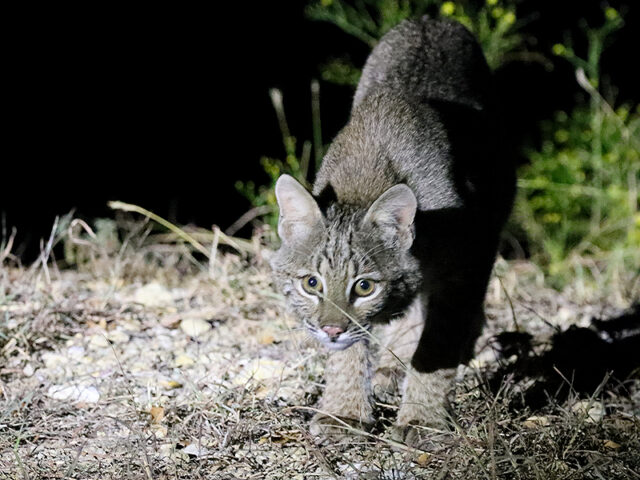
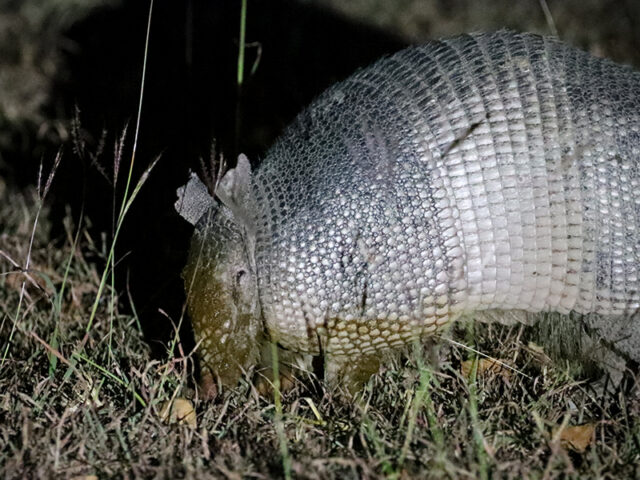
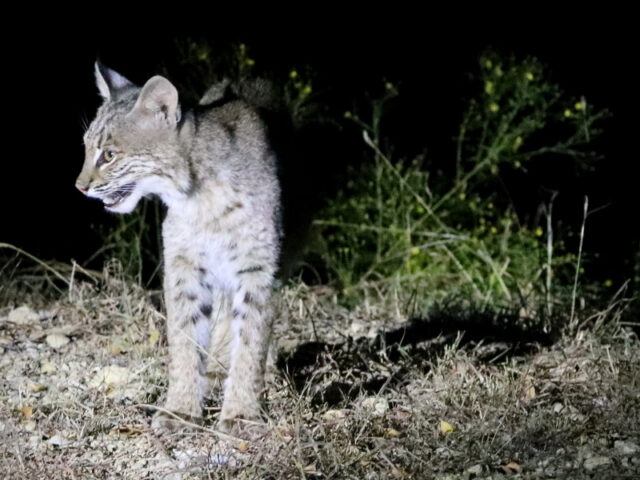
When the darkness had entrenched so deeply it could no longer be denied, we had no choice but to say our goodbyes and head for home. Bruiser and her three littermates were on their own now. Outcomes are never guaranteed in cases like these. All four of the young Bobcats will have a lot to learn, and there will be many challenges for them. But due to the good work, care, and dedication provided by Kari, these four cats have been given a new lease on life, and a second chance to live free in the wild as they were meant to.



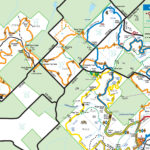




Wonderful and inspiring article! Thank you for your blog. Bobcats are mysterious, fascinating creatures. I always feel like I’ve been gifted by their presence when I see one.
Thanks for sharing your story. I am curious to know if any of the released young Bobcats have ever been spotted. Thank you for giving them another chance.
About 4 or 5 years ago I observed a bobcat sitting under my bird feeder. He/she rested there for about 15 minutes. Once he had enough of a siesta, he stood up and non-chalantely walked back into the thick forest behind my house. I will never forget that day. Bobcats are so cool.
Jeanne
from CT